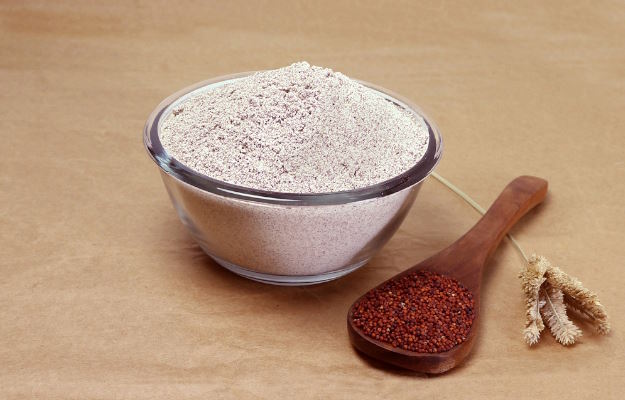Glycemic index (GI) is a ranking of foods containing carbohydrates by their glycemic response or the amount and speed with which they raise blood sugar levels, two hours after eating which is compared to the reference food - either glucose or white bread.
The lower the glycemic index, the lower the rise in blood sugar. Glycemic index is an important tool used in deciding which carbs to include in an individual’s diet. The index ranges from 0 to 100 with:
High GI (100-70 GI): Carbohydrate-rich foods that break down quickly during digestion, release sugar rapidly into the bloodstream, causing rapid fluctuations in blood sugar levels.
Medium GI (69-56 GI): Carbohydrates that break down at a moderate rate during digestion and release blood sugar moderately into the bloodstream.
Low GI (55-0): Carbohydrates that break down slowly during digestion, release sugar gradually into the bloodstream, and keep blood sugar levels steady.
(Read more: Blood sugar test)
- Indian food glycemic index
- How to use glycemic index
- Factors that affect glycemic index
- Benefits of foods with low glycemic index
- Tips on including more low GI foods in diet
- Takeaways
Indian food glycemic index
It is important to remember that the glycemic index is a ranking for carb-based foods only and does not include fatty foods like ghee and walnuts or protein-rich foods like chicken and seafood. So while foods with lower glycemic index tend to be better for health than high glycemic index foods, they should still be eaten in moderation as there are even healthier options like fish, nuts and seeds among common Indian foods.
Here’s a quick look at the glycemic index of some common foods we eat across India:
| Food groups | Low GI (0-55) | Medium GI (55-69) | High GI (> 70) |
| Cereals | Barley, oat bran, quinoa, daliya | Whole wheat, rye, muesli, basmati or brown rice | White rice or bread, puffed rice, beaten rice (poha), refined flour (maida), instant oats, cornflakes, cake, and cookies |
| Pulses | Green gram, black-eye peas (lobia), soybean, chickpea (chhole), kidney bean (rajma) | ||
| Vegetable | Leafy greens (such as spinach, fenugreek, amaranth), brinjal, green beans, cauliflower, carrot, cucumber, tomato, broccoli | Peas, yam, sweet potato | Pumpkin, white potato |
| Fruits | Apricots, apple, grapefruit, oranges, kiwi, peaches and pears, plum, berries | Papaya, banana, cantaloupe, mango, figs, pineapple, dried fruits and raisins | Watermelon, dates |
| Milk and Milk Products | Milk and milk products such as curd, buttermilk | Ice-cream | |
| Others | Vegetable soup, peanuts, flax seeds, almonds, walnuts, pumpkin or sunflower seeds, seafood, eggs, meat, spices | Soft drinks, honey | Energy drink, pizza, fast foods, sugar, jaggery, chocolates |
How to use glycemic index
Now that you know the glycemic index (GI) of some common Indian foods, here are a few things to keep in mind when you use this knowledge to your benefit:
- The GI value represents the type of carbohydrate in a food but says nothing about the amount of carbohydrate typically eaten. Portion sizes are still relevant for managing blood glucose and for losing or maintaining weight.
- The GI of a food is different when eaten alone than it is when combined with other foods. When eating a high GI food, one can combine it with low GI foods to balance out the effect on blood glucose levels. Some nutritious foods could have a higher GI but it is important to include them in your diet for their nutritional value. For example, mangoes are rich in vitamin A, vitamin C, folate (the natural form of vitamin B9), vitamin B6, fibre, iron and even small amounts of calcium and zinc (zinc boosts immunity). The use of the GI needs to be balanced with basic nutrition principles of variety for healthy foods and moderation of foods with fewer nutrients.
Fat and fiber tend to lower the GI of a food. As a general rule, the more cooked or processed the food, the higher the GI; however, this is not always true.
Factors that affect glycemic index
Below are a few specific examples of factors that can affect the GI of a food:
- The size of starch in the food: The smaller the particle size, the greater is the glycemic effect. Raw foods having larger particle sizes have a lower glycemic effect than cooked foods.
- Cooking method: Foods cooked by dry and quick methods like roasting have a lower GI, as compared to foods that are cooked by a longer process. For example, roasted chana, chapati, sprouts and whole fruits have a lower GI than boiled rice, khichdi, steamed dals and fruit juices.
- Ripeness and storage time: The more ripe a fruit or vegetable is, the higher the GI will be.
- Fiber content: Foods with high fiber content typically have a lower and/or medium GI.
- Processing: The more processed a food item is, the higher its GI will be. Juice has a higher GI than whole fruit; mashed potato has a higher GI than a whole baked potato, stone-ground whole wheat bread has a lower GI than white wheat bread.
- Variety: Converted long-grain white rice has a lower GI than brown rice but short-grain white rice has a higher GI than brown rice.
- Individual differences in glycemic and insulin response: The rate at which different people digest carbohydrates and secrete insulin in the body varies from person to person. In addition, it has been shown that one person's glycemic response may vary from one time of day to another.
See Similar Category Medicines Here
Benefits of foods with low glycemic index
Following are a few reasons why one should choose foods that have a low GI:
- They help control your blood sugar and blood cholesterol levels.
- They keep your appetite under control and boost weight loss.
- They lower your risk of developing heart disease, type 2 diabetes, stroke, Alzheimer’s and certain cancers.
- They also play a role in healthy ageing, boost the immune system and enhance endurance.
(Read more: How to increase immunity)
Are you also troubled by obesity and are not able to lose weight even after a lot of efforts, then start using myUpchar Ayurveda Medarodh Weight Control Tablet today and control your weight.
Tips on including more low GI foods in diet
Some suggestions to integrate low GI/GL into your day-to-day meal planning:
- Choose fresh fruits and vegetables over canned versions or juices.
- Give preference to whole pulses such as chickpeas, kidney beans, lentils, beans and peas over washed pulses.
- Limit refined grains such as white bread, white rice and processed low fiber cereals.
- Choose whole-grain chapati, breads, cereals, pasta and rice whenever possible.
- Consume fiber-rich vegetables like eggplant, green beans, cauliflower, carrot, cucumber, tomato, broccoli, leafy greens over starchy and root vegetables like potato or yam. (Read more: Fiber-rich foods)
- Include healthy nuts like almonds, walnuts and peanuts and seeds like flax and sunflower seeds in your regular diet.
- Include lean meat, seafood, eggs and low-fat dairy products in your diet.
- Pick low-calorie and low-fat food over street, processed and fast or junk food.
(Read more: Diabetes diet)
Takeaways
Just because a food has a low GI doesn’t necessarily make it a healthy food. Some foods may have a low GI but could be high in saturated fats, including additives, flavourings, colourings, or preservatives or simply provide little in the way of nutrients by offering “empty” calories.
So, always check the full label and nutrient list and ensure that a large proportion of the food you eat is minimally processed.
Find Nutritionist in cities
Doctors for Glycemic index of Indian foods

Dr. Dhanamjaya D
Nutritionist
16 Years of Experience

Dt. Surbhi Upadhyay
Nutritionist
3 Years of Experience

Dt. Manjari Purwar
Nutritionist
11 Years of Experience

Dt. Akanksha Mishra
Nutritionist
8 Years of Experience
References
- Franz Marion J. The Glycemic Index. Diabetes Care. 2003 Aug; 26(8): 2466-2468.
- Fiona S. Atkinson, et al. International Tables of Glycemic Index and Glycemic Load Values: 2008. Diabetes Care. 2008 Dec; 31(12): 2281-2283.





























